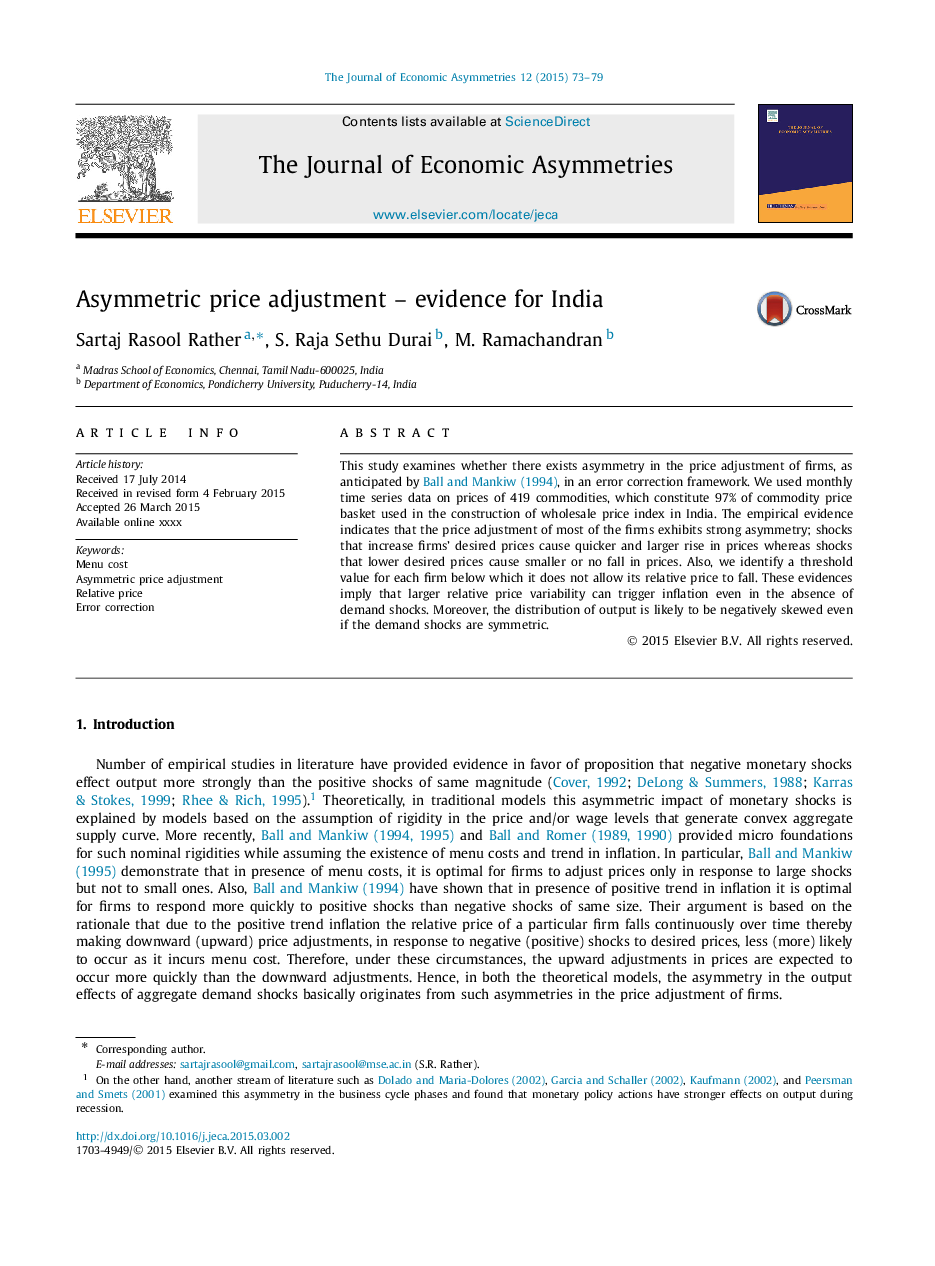| Article ID | Journal | Published Year | Pages | File Type |
|---|---|---|---|---|
| 5097690 | The Journal of Economic Asymmetries | 2015 | 7 Pages |
Abstract
This study examines whether there exists asymmetry in the price adjustment of firms, as anticipated by Ball and Mankiw (1994), in an error correction framework. We used monthly time series data on prices of 419 commodities, which constitute 97% of commodity price basket used in the construction of wholesale price index in India. The empirical evidence indicates that the price adjustment of most of the firms exhibits strong asymmetry; shocks that increase firms' desired prices cause quicker and larger rise in prices whereas shocks that lower desired prices cause smaller or no fall in prices. Also, we identify a threshold value for each firm below which it does not allow its relative price to fall. These evidences imply that larger relative price variability can trigger inflation even in the absence of demand shocks. Moreover, the distribution of output is likely to be negatively skewed even if the demand shocks are symmetric.
Related Topics
Social Sciences and Humanities
Economics, Econometrics and Finance
Economics and Econometrics
Authors
Sartaj Rasool Rather, S. Raja Sethu Durai, M. Ramachandran,
